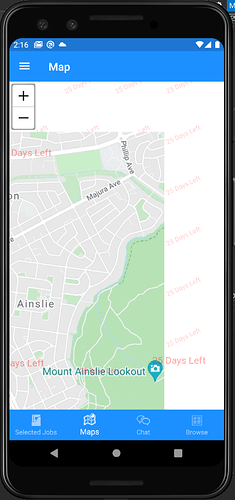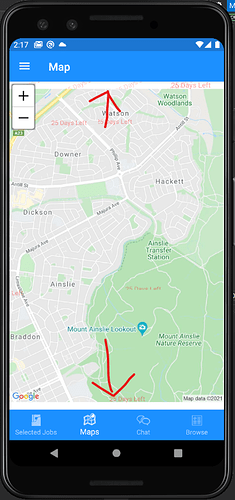Afternoon,
Xamarin Forms app. Looking to migrate over from the Xamarin Forms Map control and Google SDK on the platforms (droid and iOS) to use your map control.
Using your map control we are currently using a Google Overlay and this uses the Google API and I am seeing quite a difference between the combination of your control and the Google API and the Forms map control and SDK when panning and zooming.
From what I have read in the forums it appears the Google API requires the use of a single tile rather than multiples.
This would explain the panning issue I see when panning as it is one big tile and not the lovely and smooth panning that the SDK provides. See shot below:
The next issue I think is going to be similar to the one above (single tile) is when zooming. On certain zoom levels the map area is not “filled”. As you can see from the shot below at the top and bottom of the view.
This is the code I am using for the Google overlay
GoogleMapsOverlay googleMapsOverlay = new GoogleMapsOverlay(googleApiKey: gAPIKey, uriSigningSecret: gUriSigningSecret)
{
MapType = GoogleMapsMapType.Mobile
};
MapView.Overlays.Add(googleMapsOverlay);
I did see some chatter in the forums about requesting various sized tiles but this appears to be when we could choose the tile mode.
I am seeking some direction here on how best to resolve this?
Is it even possible to correct the panning and zooming issues using the Google Overlay?
Is the better solution to use another provider for the Overlay?
Other suggestions?
I hope you can assist here.
Regards
Chris …



 ?
?
